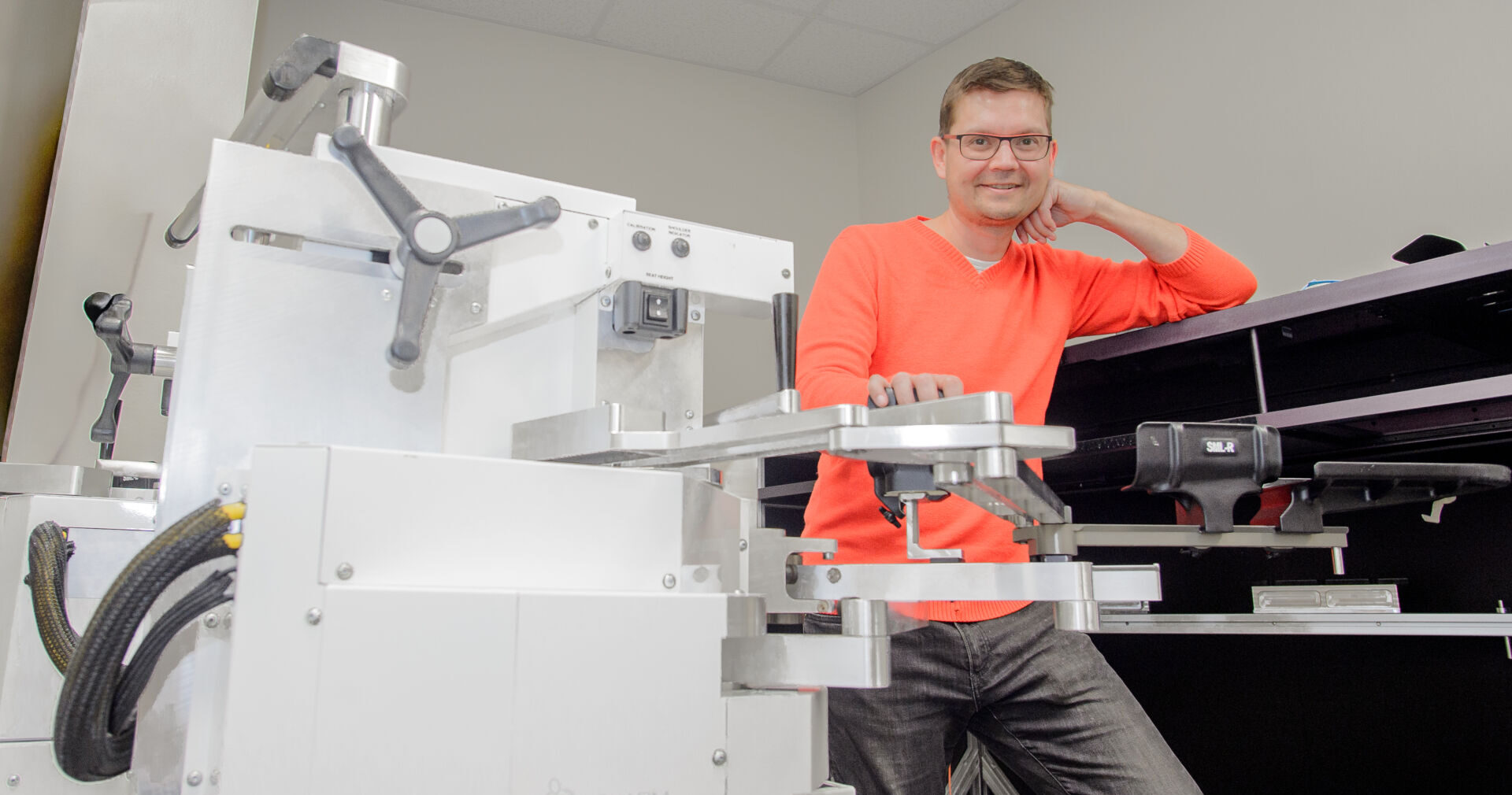Science
New Study Unveils Brain’s Anticipatory Mechanisms for Movement

A recent study from Western University, published in the journal Nature, reveals that the human brain actively anticipates disruptions during movement, enhancing our ability to respond effectively. This research highlights the brain’s predictive capabilities, which could have significant implications for rehabilitation following strokes and injuries, as well as for the advancement of brain-computer interfaces.
The research team, led by Andrew Pruszynski, Canada Research Chair in Sensorimotor Neuroscience, utilized a robotic device to test participants’ reactions. By nudging their arms in various directions, the team assessed how prior cues regarding potential disturbances influenced the subjects’ movements. Participants demonstrated improved muscle responses when the anticipated push aligned with their expectations.
“This study, which took years of effort, highlights how much we still have to learn about how the brain works,” said Jonathan A. Michaels, lead author and assistant professor in the Faculty of Health at York University. He emphasized the importance of foundational research in uncovering these insights.
Understanding Motor Circuits
The collaborative effort included experts such as Jörn Diedrichsen, Western Research Chair for Motor Control and Computational Neuroscience, and psychologist Paul Gribble, who also co-led the research in Western’s Sensorimotor Superlab. Their investigation revealed that motor circuits do not merely react to sensory signals; instead, they prepare themselves to tackle various challenges proactively.
To further explore the brain’s mechanisms, the researchers recorded activity from thousands of neurons in monkeys performing similar tasks. This data indicated that motor circuits enter a preparatory state, anticipating disturbances and formulating appropriate responses. The study’s findings could pave the way for innovative rehabilitation strategies by demonstrating how expectations can enhance motor control.
“We are 100 percent committed to sharing this data as broadly and openly as possible,” Pruszynski stated. “It will be mined, and already has been mined by other researchers, because it is unique and one of the most thorough datasets that exist today in understanding how the brain controls movements.”
Advancements in Neuroscience Technology
The study employed Neuropixels technology, which features thousands of recording sites on a slim probe, now utilized in human patients. This advancement marks a significant leap in neuroscience; Pruszynski noted that during his PhD, he recorded around 1,000 neurons over seven years, while current methods allow researchers to capture similar quantities in just a couple of days.
Pruszynski concluded, “It is now more evident than ever that you can’t understand the brain fully by studying one neuron at a time. Much of how the brain works depends on the coordinated patterns of how neurons change and react to other neurons.”
As this research continues to unfold, it holds promise for developing new therapeutic techniques that leverage the brain’s predictive capabilities, potentially transforming rehabilitation practices and enhancing brain-computer interface technology in the future.
-

 Science2 months ago
Science2 months agoToyoake City Proposes Daily Two-Hour Smartphone Use Limit
-

 Health2 months ago
Health2 months agoB.C. Review Reveals Urgent Need for Rare-Disease Drug Reforms
-

 Top Stories2 months ago
Top Stories2 months agoPedestrian Fatally Injured in Esquimalt Collision on August 14
-

 Technology2 months ago
Technology2 months agoDark Adventure Game “Bye Sweet Carole” Set for October Release
-

 World2 months ago
World2 months agoJimmy Lai’s Defense Challenges Charges Under National Security Law
-

 Technology2 months ago
Technology2 months agoKonami Revives Iconic Metal Gear Solid Delta Ahead of Release
-

 Technology2 months ago
Technology2 months agoSnapmaker U1 Color 3D Printer Redefines Speed and Sustainability
-

 Technology2 months ago
Technology2 months agoAION Folding Knife: Redefining EDC Design with Premium Materials
-

 Business2 months ago
Business2 months agoGordon Murray Automotive Unveils S1 LM and Le Mans GTR at Monterey
-

 Technology2 months ago
Technology2 months agoSolve Today’s Wordle Challenge: Hints and Answer for August 19
-

 Lifestyle2 months ago
Lifestyle2 months agoVictoria’s Pop-Up Shop Shines Light on B.C.’s Wolf Cull
-

 Technology2 months ago
Technology2 months agoApple Expands Self-Service Repair Program to Canada









